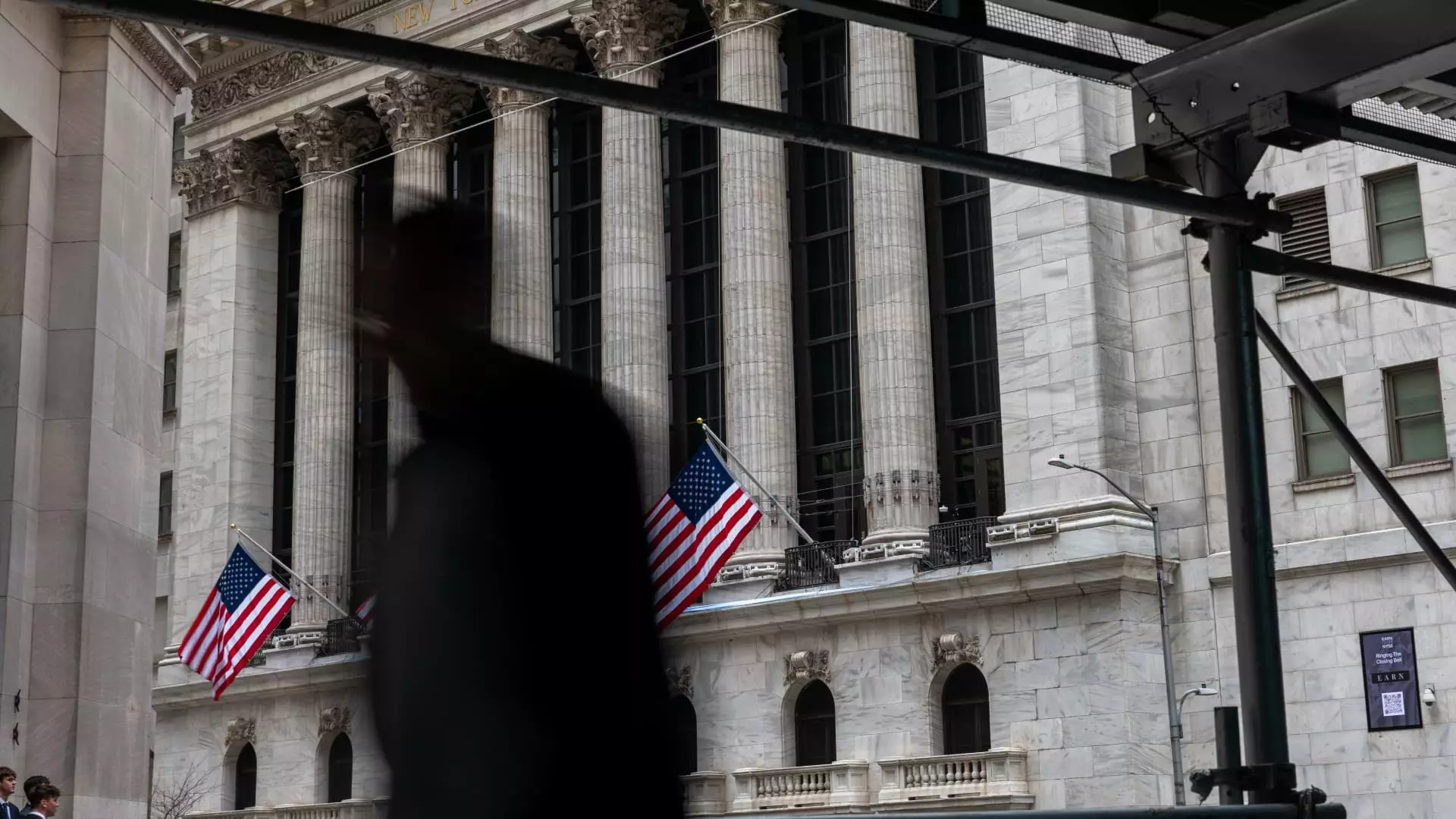In a striking move that reverberates across global financial markets, China has advanced its response to U.S. tariffs with a staggering 34% levy on American goods, effective April 10. According to Neo Wang, the chief strategist at Evercore ISI, this swift retaliation was no mere coincidence. Instead, it signifies a calculated strategy aimed at amplifying turmoil within U.S. equity markets. This development, which unfolded while many traders were occupied with their holiday plans, raises critical questions about the motivations and economic calculations underpinning Beijing’s aggressive posture.
The irony of the situation is hard to overlook: while President Donald Trump’s administration seeks to re-establish equilibrium in international trade with American interests at the forefront, China’s response appears designed not just to target American products but also to provoke panic in financial markets. The impact was immediate and severe; the Dow Jones Industrial Average plummeted by over 1,400 points, signaling investor anxiety as stock prices seem directly tethered to geopolitical tensions.
Financial Backlash: Is it Worth the Risk?
The implications of these tariffs are profound and multifaceted. For China, which heavily relies on U.S. technology and imported goods, this retaliatory measure may have far-reaching ramifications for its domestic economy. The decision to impose these tariffs, especially in the context of rising domestic pressures, raises a poignant paradox: punishing the American economy could, in fact, backfire and hurt Chinese consumers and businesses that are dependent on American technology and goods. Wang aptly pointed out that the Chinese economy is precariously interwoven with U.S. export markets; therefore, introducing tariffs could serve as a double-edged sword.
The extreme tariffs could trigger a downturn in China’s own economic growth, potentially leading to social unrest amidst an already fragile political climate, where stability is paramount. While the Chinese government aims to project strength, it’s essential to recognize that underneath this show of toughness lies the risk of escalating discontent among its citizens, who may grow weary of rising prices and dwindling choices.
Negotiation Tactics or Economic Support?
It’s essential to evaluate whether China’s aggressive tariff policies are merely a strategic pre-game before negotiations or if they signify a readiness for long-term economic warfare. Wang suggests that Beijing might be betting on the idea that increasing the stakes will generate advantageous negotiating conditions in the future. This gamble could potentially push Trump to the negotiating table out of fear of further retaliation. However, as history shows us, aggressive posturing seldom leads to constructive dialogue.
The dichotomy of the U.S.-China relationship has fostered a climate of uncertainty, significantly diminishing prospects for cooperative economic progress. As both nations engage in this proverbial game of chicken, the critical question looms: what happens when both sides refuse to budge? If neither side shows willingness to make concessions, both economies suffer, which would contradict the initially stated rationale of protecting national interests.
Outlook for Future Relations
The newly introduced tariffs and China’s desire to strike back demonstrate a disconnect between the rhetoric of economic cooperation and the realities of geopolitical tensions that have been brewing for years. With the U.S. administration taking a hardline stance against perceived infringements on fair trade practices, any hopes for negotiations that do not involve significant compromises on both sides seem increasingly remote.
Furthermore, the recent move by China to include additional U.S. firms on their “unreliable entities list” only compounds the dilemma, as it demonstrates further unwillingness to engage in fair negotiations. It’s alarming how a single misstep could send both economies into a tailspin, wrecking livelihoods on both sides of the Pacific.
As observants of international relations and trade dynamics, we must prepare for the ramifications of this escalating tariff war. Financial markets are already reacting violently; the potential for broader economic fallout looms. The pressing desire for U.S.-China trade relations to evolve positively now hangs precariously in the balance, as tensions continue to rise amid an ongoing struggle for leverage.

